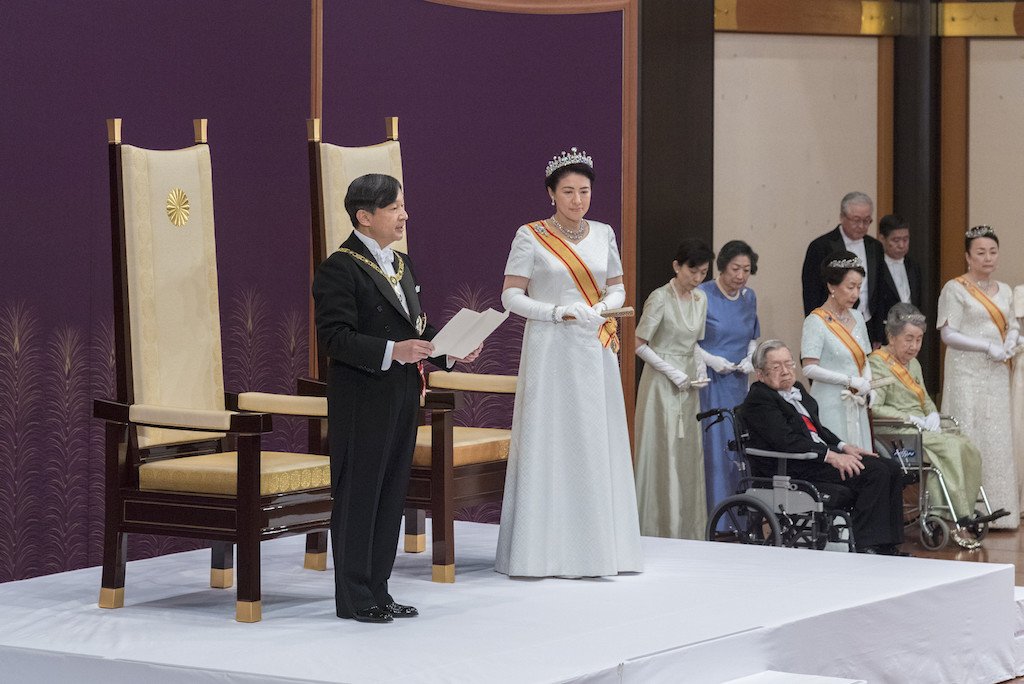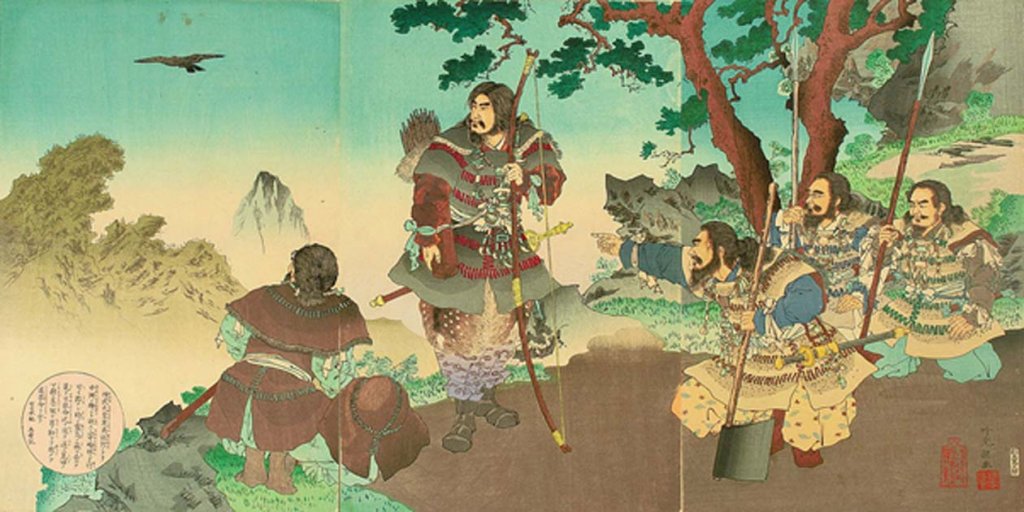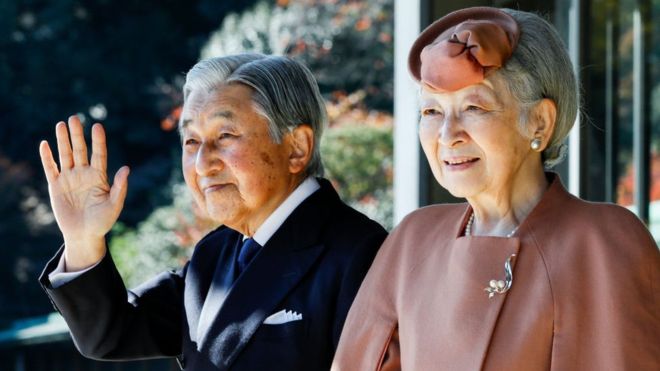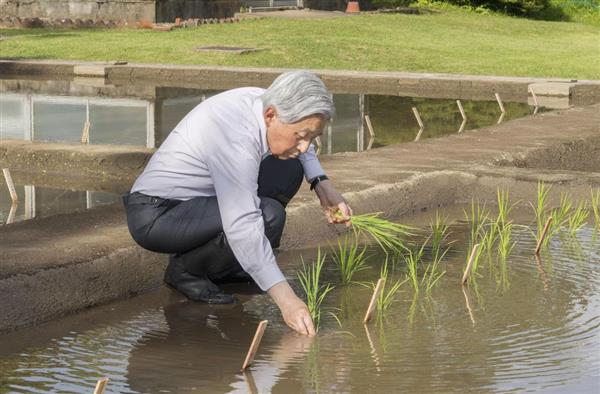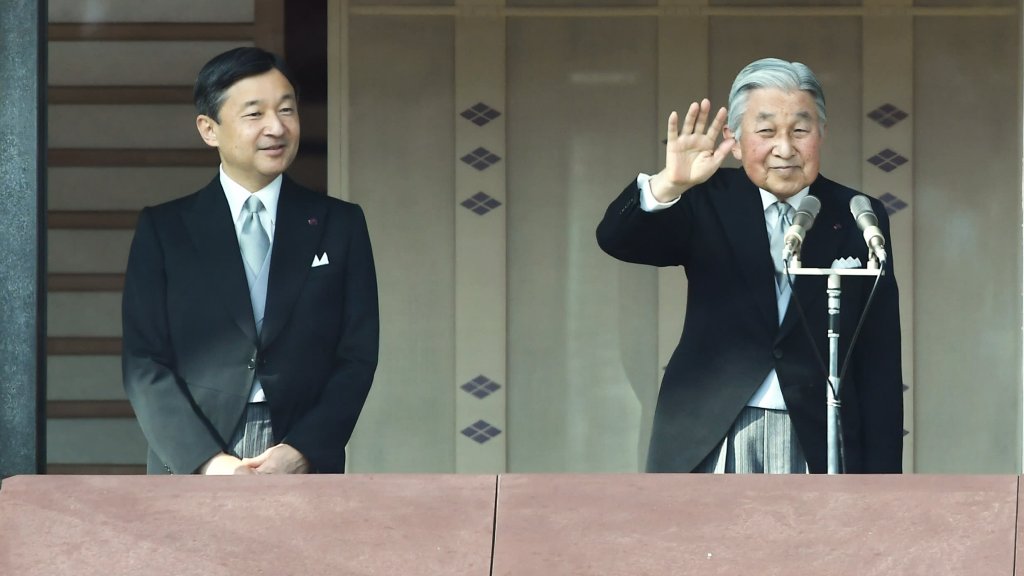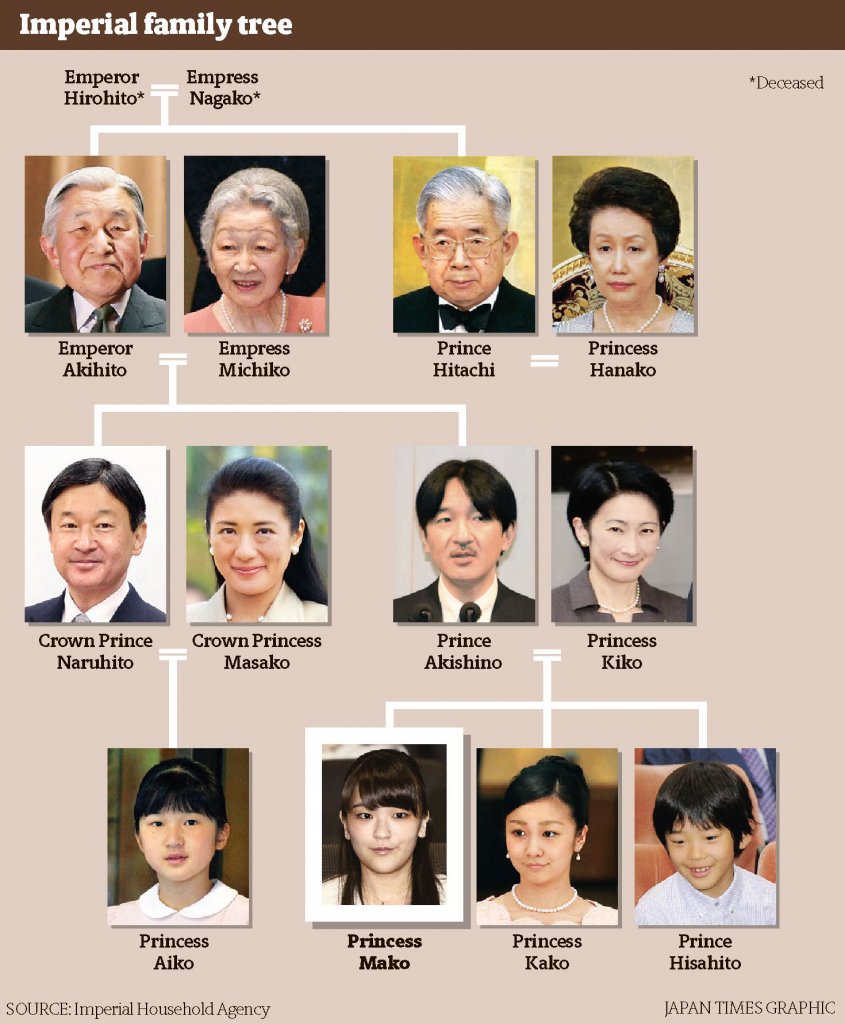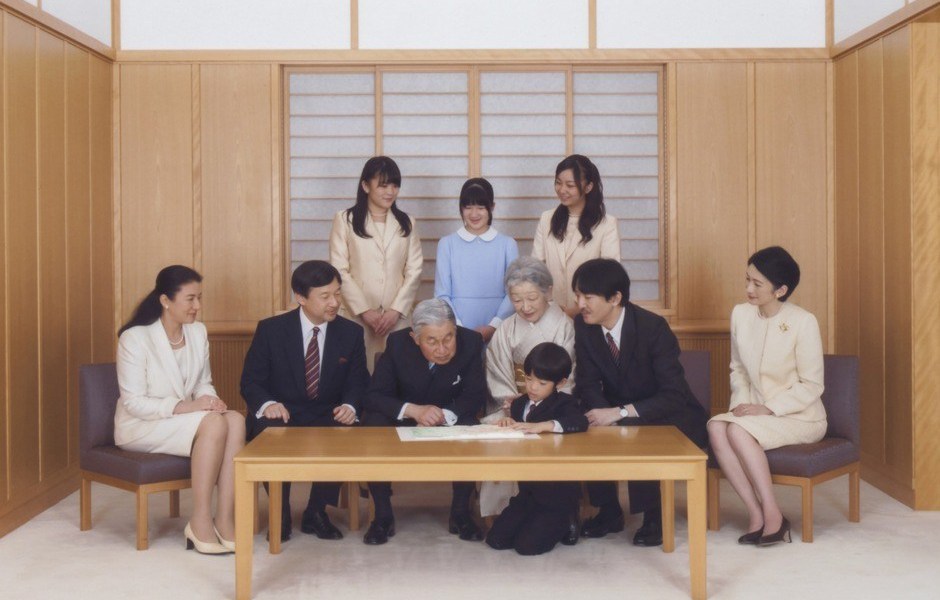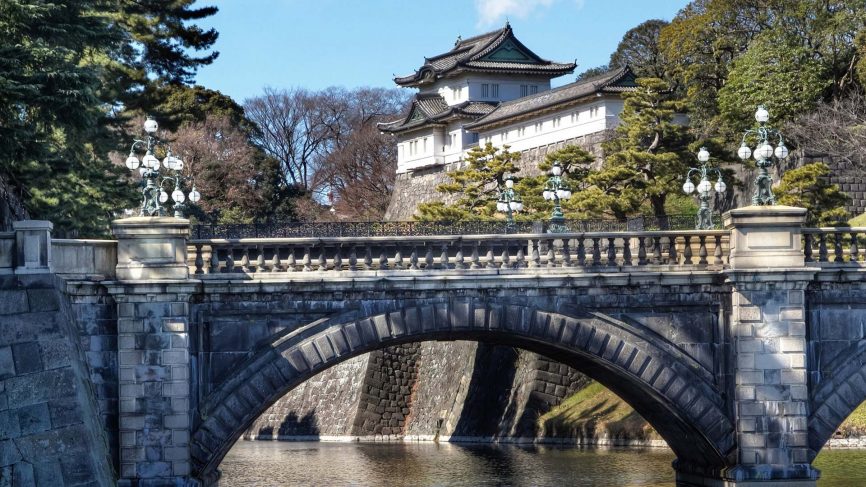Today there are more than 190 monarchs worldwide, but only Japan has an Emperor descended from an “uninterrupted bloodline” that dates back over 2,000 years. However, the elusive lives of the symbolic head of state and his family were mostly unknown to the public until 2003. We take a peak behind the curtain and see what it takes to sit on the Chrysanthemum Throne.
Intro
The Emperor of Japan is the head of the Imperial Family, and serves as the symbolic head of state of Japan. The most modern definition is stated in the 1947 constitution as being “the symbol of the State and of the unity of the people.” The emperor is called tennō (天皇) in Japanese, which literally means “heavenly sovereign”. The role is also the highest authority of the Shinto religion, and throughout Japanese history, the emperor has helped shape Japan in number of ways – including economics, politics, religion, culture, and art.
The Chrysanthemum Throne, known as the kōi (皇位) in Japanese, is the throne of the Emperor of Japan. The term is often used as a blanket-term for the monarchy of Japan, but also can refer to specific thrones, like the Takamikura (高御座) throne at Kyoto Imperial Palace.
The First Emperor
Japan’s Imperial reign is the world’s oldest hereditary monarchy. According to the ancient recordings of the Kojiki (712) and Nihon Shoki (720), legends say the sun goddess Amaterasu Omikami passed down 3 special treasures – a mirror, jewels, and a sword, to her descendant, who was the legendary first emperor Jimmu.
These eighth-century chronicles date Jimmu’s reign as far back to 660 BC, when the he is said to have first taken the throne. Japan’s emperors have looked after these 3 sacred imperial regalia ever since.
For most of Japan’s imperial institution history, the emperor was primarily a symbolic and religious figure and therefore lacked real political power. Under the Meiji constitution in the year 1889, the emperor became a constitutional monarch as well as a “divine sovereign” to receive loyalty from all subjects.
Emperors and Eras
Throughout history, every emperor’s reign has been given a gengō (元号), or an “era name” that’s used to label the years. The gengō is just as widely used in Japan as the Western calendar, and it is printed on newspapers, coins, driving licenses and legal documents. The gengō is also used by the Japanese to describe the decades of that time, just as people in the West say “the 90s” or “the Victorian era”.
It is currently the first year of the Reiwa (令和) era in Japan, which began when the current emperor Naruhito was coronated on May 1, 2019. Rei (令) can mean “command” or “order”, as well as “auspicious” or “good”. Wa (和) often means “harmony”, and is also used in the Japanese word for “peace”: heiwa (平和).
The previous emperor was his father, 85-year-old Akihito, and his era was known as Heisei (平成). It started with his reign in 1989, so 2019 was Heisei 31. The era name means “achieving peace” and was chosen to reflect Japan’s desire for good relations at home and overseas.
The era before that was Shōwa (昭和), which means “enlightened harmony”. The Shōwa era was named for the reign of emperor Hirohito and lasted 64 years. It included both World War Two and Japan’s post-war economic boom.
At the end of their reigns, Japan’s emperors are renamed after their eras. The Emperor-emeritus Akihito will be known as Emperor Heisei, just as his father, Hirohito, was named Emperor Shōwa. Era names can never be repeated.
The Role of the Emperor
The role of the Emperor of Japan has historically alternated between a largely ceremonial symbolic role and that of an actual imperial ruler. Since the establishment of the first shogunate in 1199, the emperors have rarely taken on a role as supreme battlefield commander, unlike many Western monarchs. Japanese emperors have nearly always been controlled by external political forces, to varying degrees.
For example, between 1192 and 1867, the shōguns, or their shikken regents in Kamakura (1203–1333), were the de facto rulers of Japan, although they were nominally appointed by the emperor. After the Meiji Restoration in 1867, the emperor was the embodiment of all sovereign power in the realm, as enshrined in the Meiji Constitution of 1889. Since the enactment of the 1947 Constitution, the role of emperor has been to act as a ceremonial head of state without even nominal political powers.
Unlike most constitutional monarchs, the Emperor is not the nominal chief executive. Article 65 explicitly vests executive power in the Cabinet, of which the Prime Minister is the leader. The Emperor is also not the commander-in-chief of the Japan Self-Defense Forces. The Japan Self-Defense Forces Act of 1954 also explicitly vests this role with the Prime Minister. The Emperor’s powers are limited only to important ceremonial functions. Article 4 of the Constitution states that the Emperor “shall perform only such acts in matters of state as are provided for in the Constitution and he shall not have powers related to government.”
Article 6 of the Constitution provides the Emperor with the following ceremonial roles:
- Appointment of the Prime Minister as designated by the Diet.
- Appointment of the Chief Justice of the Supreme Court as designated by the Cabinet.
The Emperor’s other duties are laid down in article 7 of the Constitution, where it is stated that “the Emperor, with the advice and approval of the Cabinet, shall perform the following acts in matters of state on behalf of the people:”
- Promulgation of amendments of the constitution, laws, cabinet orders, and treaties.
- Convocation of the Diet.
- Dissolution of the House of Representatives.
- Proclamation of general election of members of the Diet.
- Attestation of the appointment and dismissal of Ministers of State and other officials as provided for by law, and of full powers and credentials of Ambassadors and Ministers.
- Attestation of general and special amnesty, commutation of punishment, reprieve, and restoration of rights.
- Awarding of honors.
- Attestation of instruments of ratification and other diplomatic documents as provided for by law.
- Receiving foreign ambassadors and ministers.
- Performance of ceremonial functions.
Female Emperors
Before the Meiji Restoration, Japan had eleven reigns of reigning empresses, all of them daughters of the male line of the Imperial House. Imperial daughters and granddaughters, however, usually ascended the throne as a sort of a “place holder” – if a suitable male was not available or some imperial branches were in rivalry so that a compromise was needed. Over half of Japanese empresses handed over the throne once a suitable male descendant was considered to be old enough to rule – which was as early as toddlerhood, in some cases.
Empress Suiko is known as the first reigning empress of Japan in recorded history (rather than an empress consort). She reined from 592 – 628 C.E. and is credited with the expansion of Buddhism in Japan, increasing Chinese influence in Japan.
Article 2 of the Meiji Constitution (the Constitution of the Empire of Japan) stated, “The Imperial Throne shall be succeeded to by imperial male descendants, according to the provisions of the Imperial House Law.” The 1889 Imperial Household Law fixed the succession on male descendants of the imperial line, and specifically excluded female descendants from succeeding. There is a big debate on this issue in this current modern times.
Today
Emperors up until Akihito’s father, Hirohito (Emperor Shōwa), were treated as a “divine sovereign”, but Hirohito had to renounce his divine status after Japan was defeated in World War II. Under the constitution drafted by U.S. occupation forces in 1947, the emperor’s official role was as the “symbol of the state and the unity of the people.” This definition still in use today.
Hirohito’s son, Emperor Akihito, was acclaimed for his efforts to reconcile Japan with its former colonies in Asia and to help it project an image as a peace-loving nation. He and his wife, Empress Michiko, also modernized the royal family, bringing it closer to the Japanese people.
Akihito, who has had treatment for prostate cancer and heart surgery, said in 2016 that he feared increasing age would make it hard to carry out his duties. A year later, parliament enacted a law making his abdication possible – the first since Emperor Kokaku stepped down in 1817. Japanese Emperor Akihito, 85, abdicated on April 30, 2019 – the first Japanese monarch to do so in about two centuries. He was succeeded by his son, the Crown Prince Naruhito, who is 59.
The Imperial Family
The family of the emperor is known as the Imperial Family, and comprises those members of the extended family of the reigning Emperor of Japan who undertake official and public duties. Under the present Constitution of Japan, the Emperor is “the symbol of the State and of the unity of the people”. Other members of the Imperial Family perform ceremonial and social duties, but have no role in the affairs of government. The duties as an Emperor are passed down the line to their children.
The Japanese monarchy is claimed to be the oldest continuous hereditary monarchy in the world. The Imperial House recognizes 126 monarchs beginning with the legendary Emperor Jimmu (traditionally dated to 11 February 660 BC) and continuing up to the current emperor. Historical evidence for the first 29 Emperors is marginal by modern standards, but there is firm evidence for the hereditary line since Emperor Kinmei ascended the throne 1,500 years ago.
The current reigning Emperor, Naruhito, assumed the throne in May 2019. The Emperor and Empress have one daughter, Princess Aiko. The next in line for the Emperor is his younger brother, Crown Prince, then his heir, the young Prince Hisahito.
There are many rules and regulations that the Imperial Family must follow throughout the course of their lives. Members of the imperial family do not have a shared family name and they use only given names. Imperial family members may not choose their jobs freely – they may only be employed at nonprofit organizations working for the public good, and the emperor’s permission is required. They cannot vote or run for office, and must prioritize their official duties.
Their duties include receiving state guests from other countries and making overseas visits. Through these and other activities, they fulfill an important role in promoting international friendship. Members of the Imperial Family also maintain wide contact with the citizens of Japan through their attendance of various events across the nation and visits to facilities for the handicapped and aged.
The Imperial family are not independently wealthy – most of the Imperial assets were confiscated after World War Two and the family is now funded by the government. Emperor Naruhito, Empress Masako, and their daughter, Princess Aiko live in the Imperial Palace in central Tokyo. There are also several Imperial farms, villas, residences and game preserves. The Imperial properties are all owned by the State.
The Imperial family has a staff of 1000 people, as well as an Imperial Guard. The Imperial Guard is a special police force of over 900 people that provides personal protection for the Emperor and other members of the Imperial Family.
Until 2003, facts about the Japanese Imperial Family’s life and personal finances were hidden from the public behind the “Chrysanthemum Curtain.” This changed when Yohei Mori (a former royal correspondent for the Mainichi Shinbun) revealed details about the Imperial Family in a book based on 200 documents that were published with Japan’s public information law.
It is not likely that the role and responsibilities of the Emperor or his family will change anytime soon, and all of Japan, as well as much of the world, is watching to see what kind of era this new Reiwa era will be.
Love Japan?
LEARN BASIC JAPANESE NOW! Check out our Udemy Online Japanese Lessons.
Want your own personalized Japanese name seal? Order a custom Hanko stamp online!


